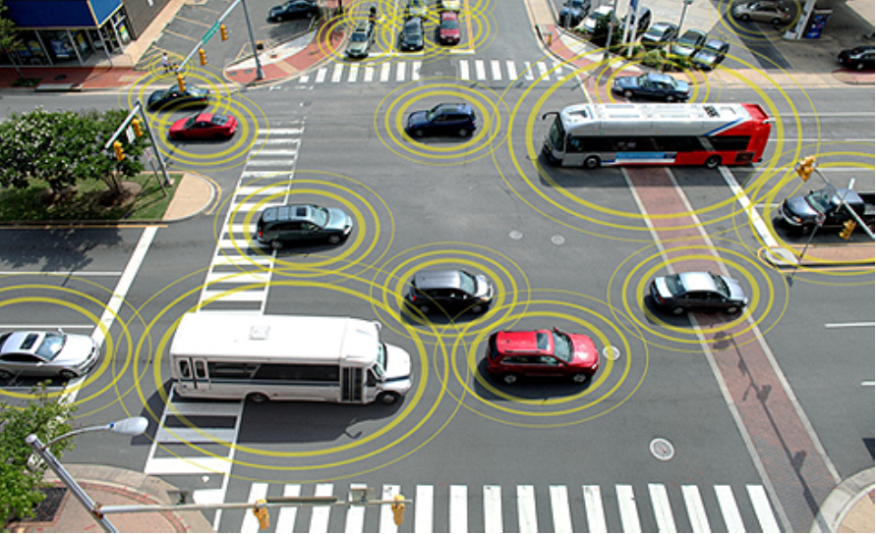
Road Network Operations
& Intelligent Transport Systems
A guide for practitioners!

Road Network Operations
& Intelligent Transport Systems
A guide for practitioners!
Probably the most significant technological development since the emergence of ITS in the 1990s is the rapidly advancing world of coordinated, or as sometimes called – “connected” vehicles and “connected” infrastructure. Vehicles in wireless communication with each other and with roadside devices share data and help avoid vehicle-vehicle collisions, red-light running crashes and many other benefits. (See Warning and Control)
To the extent that this currently happens, the contribution of ITS to traffic control will make increasing use of in-vehicle equipment to affect both the driving task (to reduce headways and boost lane capacity) and the route choice (to optimise network capacity). Policies that are aimed at lowering and spreading travel demand by influencing travel mode, time of departure and route choice will also play an increasing role.
Connected vehicles will, in the future, be able to alert drivers to unseen dangers on the road ahead, such as icy roadways or incidents. These communication capabilities applied to ITS are referred to as vehicle-to-vehicle (V2V), vehicle-to-infrastructure (V2I) – or generically, V2X. These emerging technologies have a key role to play in Intelligent Transport Systems and have the potential to greatly enhance ITS functionality. In the meantime, transport agencies and providers can only continue to make the best use of, and draw benefits from, the ITS technologies they currently have in place.
These developments make possible the autonomous operation of vehicles, where computers control the vehicles and enable collision-free, close proximity, high-speed traffic operations that will more than double the capacity of roadways. (See Smart Vehicles)
As vehicles communicate with each other – so too, might a TCC communicate with them. This makes possible the establishment of a traffic management strategy known as Dynamic Traffic Assignment (DTA) – where a central computer with near perfect “knowledge” of traffic and weather conditions throughout the network can dynamically determine the optimal route (or, pre-trip mode of travel choice) for an individual. It is intended to be capable of directing equipped vehicles to follow the optimal route. Emergency services can also be given priority in real-time to reach an incident scene quickly and efficiently. Vehicles on conflicting routes could be commanded to give way to emergency vehicles.

Most of the technologies needed to accomplish this vision already exist. Considerable investment has already been made in Research and Development across the world. As long ago as 1997, a demonstration of automated roadways was conducted in San Diego in California. Connected Vehicles have been successfully demonstrated in many other locations across the world, as illustrated in the TMC of the Future video Video: TMC of the Future
"Any sufficiently advanced technology is indistinguishable from magic." - Arthur C. Clarke